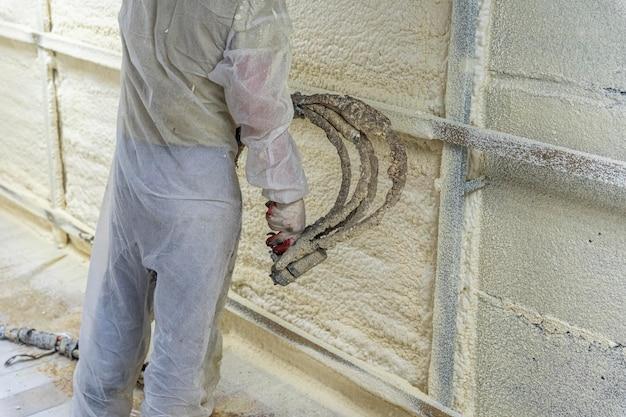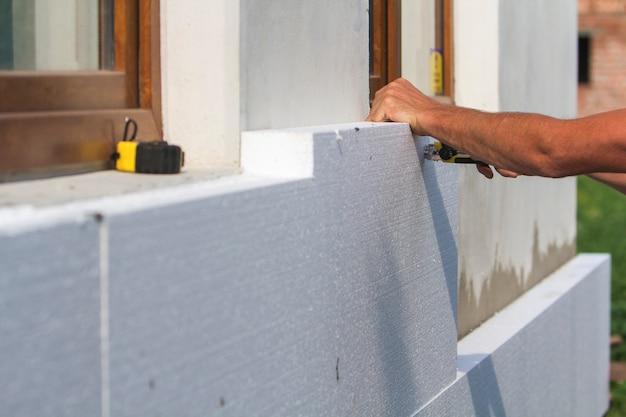Polyurethane is a popular choice for protecting and enhancing the beauty of wood surfaces. It provides a durable, long-lasting finish that adds a touch of elegance to furniture, floors, and other wooden items. But when it comes to handling heat, questions arise. Can you safely place a hot pan on polyurethane without causing damage? In this blog post, we will delve into the topic and provide you with all the information you need to know.
We’ll explore various aspects of polyurethane, such as its heat resistance, water resistance, and lifespan. We’ll also tackle important questions like the best heat-resistant varnish and how to protect wood from heat. Additionally, we’ll address common concerns about sanding between coats, drying time, and using a hairdryer on polyurethane. So, if you’re eager to learn how to care for your polyurethane-coated surfaces and keep them looking their best, keep reading!
Can You Put a Hot Pan on Polyurethane
Polyurethane is a popular choice for coating wood surfaces, providing a protective shield against wear and tear. But what happens when you accidentally place a scorching hot pan on your polyurethane-coated countertop? Will it survive the heat or crumble like a cookie left in the oven for too long? Let’s find out!
Understanding the Limits of Polyurethane
Polyurethane is a resilient and durable material, but it does have its limits. While it can handle daily wear and tear like a champ, extreme heat is not its best friend. You see, polyurethane is sensitive to high temperatures, and subjecting it to intense heat can cause it to warp or discolor.
The Sizzling Showdown: Hot Pan vs. Polyurethane
Imagine this: you’re in the kitchen, lost in the magic of cooking, and you accidentally place a red-hot pan directly onto your polyurethane countertop. Cue dramatic music. The question is, who will emerge victorious from this intense battle?
In one corner, we have the hot pan, radiating scorching heat like it’s auditioning for a role in a fiery inferno. And in the other corner, polyurethane stands, its sleek and shiny surface hiding its vulnerability to extreme temperatures.
The Verdict: Handle with Care!
Unfortunately, the battle between the hot pan and polyurethane does not end well for the latter. Subjecting polyurethane to direct heat can result in irreversible damage. The intense temperature causes the polyurethane to soften, bubble, and even peel off, leaving your once beautiful surface looking like a smudged masterpiece.
So, unless you’re a fan of charred countertops or enjoy the scent of burnt rubber, it’s best to exercise caution and protect your polyurethane surfaces from extreme heat.
Prevention is the Secret Sauce
Now that we know polyurethane’s kryptonite, it’s time to explore some preventive measures to keep your surfaces in tip-top shape. Here are a few tips to ensure your polyurethane-coated surfaces stay safe from scorching encounters:
1. Always use trivets or hot pads
Placing a protective barrier between hot objects and your polyurethane-coated surface is a simple yet effective way to prevent damage. Invest in some stylish trivets or reliable hot pads to save your countertop from unwanted burns.
2. Let it cool before placing hot items
If you’ve just taken that sizzling pan out of the oven, give it a few moments to cool down before placing it on your polyurethane-coated surface. By exercising a little patience, you’ll be safeguarding your precious countertop from potential disaster.
3. Clean with care
When cleaning your polyurethane-coated surfaces, avoid using harsh chemicals or abrasive scrubbing pads. These can weaken the protective layer, making it more susceptible to heat damage. Instead, opt for gentle cleaning solutions and soft cloths to maintain its pristine condition.
While polyurethane is a fantastic option for protecting wood surfaces, it’s important to remember its vulnerability to extreme heat. By being mindful and incorporating preventive measures into your daily routine, you can keep your polyurethane-coated surfaces looking fabulous for years to come. So, let’s raise a heat-resistant glass (not directly on the countertop, of course) to polyurethane and its incredible ability to withstand the trials and tribulations of everyday life!
FAQ: Can You Put A Hot Pan On Polyurethane
Polyurethane is a popular choice for protecting wood surfaces, but when it comes to heat resistance, there are some important things to consider. In this FAQ-style subsection, we’ll answer common questions about using polyurethane and heat resistance.
What is the best heat resistant varnish
There are several heat-resistant varnishes available on the market, but the best one depends on your specific needs. Look for varnishes that specifically mention heat resistance in their product descriptions. Always read reviews and seek recommendations from professionals or other users.
How long will polyurethane last
The lifespan of polyurethane can vary depending on factors such as usage, exposure to sunlight, and the quality of the product. On average, polyurethane can last between 5 to 10 years before it starts to wear down and requires reapplication.
Is polyurethane water resistant
Yes, polyurethane is known for its water-resistant properties. It provides a protective barrier that helps to prevent water damage to wood surfaces. However, it’s important to note that prolonged exposure to water can still cause damage over time, so it’s best to wipe off any spills or moisture promptly.
What is the most heat resistant wood
When it comes to heat-resistant wood, some varieties stand out. Hardwoods like oak, hickory, and maple are known for their ability to withstand high temperatures. These woods have natural oils and dense structures that make them more resistant to heat damage.
How do you protect wood from heat
To protect wood from heat, there are several preventative measures you can take. Using trivets or hot pads under hot pans or dishes is a great way to avoid direct contact between the wood and the heat source. Regularly applying a heat-resistant varnish or coating can also provide an extra layer of protection.
Which wood finish is heat resistant
When it comes to heat resistance, some wood finishes perform better than others. Look for finishes that specifically mention heat resistance, such as those labeled as “heat-resistant” or “high-temperature resistant”. It’s important to choose a finish that is designed to withstand the levels of heat you anticipate exposing the wood to.
How many coats of polyurethane is too many
Applying multiple coats of polyurethane is common practice, but there is a limit. Generally, two to three coats of polyurethane are sufficient to achieve a durable and protective finish. Applying too many coats can lead to excessive buildup and may result in a less attractive or uneven surface.
How do you smooth the final coat of polyurethane
To achieve a smooth final coat of polyurethane, consider using a fine-grit sandpaper (such as 400-grit or higher) to lightly sand the surface between coats. Sanding helps to remove any imperfections or bubbles that may have formed during the application process. Be sure to wipe away any sanding dust before applying the next coat.
Will a fan speed up polyurethane drying time
Yes, using a fan can help speed up the drying time of polyurethane. Increased airflow promotes evaporation, which accelerates the drying process. However, be cautious of dust and debris that may be stirred up by the fan, as they can potentially mar the finish.
What varnish is heat resistant
When it comes to heat resistance, look for varnishes specifically labeled as heat-resistant or high-temperature resistant. These varnishes are formulated to withstand elevated temperatures and offer better protection against heat-related damage.
What is the toughest varnish
There are various varnishes available on the market that claim to be tough and durable. Look for varnishes that are specifically marketed as high-performance or heavy-duty. These varnishes are typically formulated to withstand heavy use and provide long-lasting protection.
How much heat can polyurethane take
Polyurethane can generally withstand temperatures up to 200 degrees Fahrenheit (93 degrees Celsius) without significant damage. However, it’s always best to use protective measures, such as trivets or hot pads, when placing hot pans or dishes on polyurethane-coated surfaces.
Is polyurethane a sealer
Polyurethane is not only a protective coating but also a sealer. It forms a barrier on the surface, preventing moisture, dirt, and other substances from penetrating the wood. This helps to preserve the appearance and integrity of the wood over time.
Do you have to sand between each coat of polyurethane
Sanding between each coat of polyurethane is not always necessary. However, if you want to achieve a smoother and more even surface, lightly sanding between coats can help remove any imperfections or debris. Remember to wipe away any sanding dust before applying the next coat.
What happens if you don’t sand between coats of polyurethane
If you skip sanding between coats of polyurethane, the surface may not be as smooth or even. Dust or debris can become trapped, leading to an unattractive finish. Sanding between coats helps to ensure better adhesion and a more professional-looking result.
What clear coat is heat resistant
Look for clear coats that are specifically labeled as heat-resistant or high-temperature resistant. These clear coats are designed to withstand elevated temperatures and provide protection against heat-related damage. Be sure to follow the manufacturer’s instructions for application and usage.
Can you sleep in the house after polyurethane
Polyurethane can release strong odors during the drying process, which may be unpleasant or bothersome, especially for those with sensitivities. It’s generally recommended to wait at least 24-48 hours for the odor to dissipate before sleeping in a freshly polyurethane-coated area. Proper ventilation can help speed up the process.
How can I make polyurethane heal faster
To make polyurethane heal faster, ensure proper ventilation by opening windows and doors or using fans. Increasing airflow helps with evaporation and drying. Avoid applying thicker coats, as they tend to take longer to dry. Following the manufacturer’s recommended drying time is also essential for optimal results.
What is the hardest varnish
When it comes to hardness, varnishes specifically labeled as “high-performance” or “hard-drying” tend to be the toughest. These varnishes cure to a more durable and resilient finish, offering better protection against wear and tear.
What is the difference between varnish and polyurethane
Varnish and polyurethane are both protective coatings used on wood surfaces, but they have some differences. Varnish is typically oil-based and has a yellowish tint, while polyurethane can be either oil-based or water-based and dries clear. Polyurethane also tends to be more resistant to chemicals and water damage.
Can you put heat on polyurethane
While polyurethane is heat resistant to a certain extent, it’s best to avoid placing hot pans or dishes directly on the surface. Always use trivets or hot pads to protect the polyurethane coating and the underlying wood from potential heat damage.
What is the lifespan of polyurethane
The lifespan of polyurethane can vary depending on various factors such as usage, exposure to sunlight, and the quality of the product. On average, polyurethane can last between 5 to 10 years before it may require reapplication or touch-ups to maintain its protective properties.
Can I use a hair dryer on polyurethane
Using a hair dryer to speed up the drying process of polyurethane is not recommended. Hair dryers can generate excessive heat or airflow, which may cause the polyurethane to dry unevenly or form bubbles. It’s best to allow the polyurethane to dry naturally or use proper ventilation methods.
Is water-based varnish heat resistant
Water-based varnishes can vary in their heat resistance. Some water-based varnishes are designed to withstand high temperatures, while others may not be as heat resistant. Always read the product labels and descriptions to determine the heat resistance capabilities of a specific water-based varnish.

